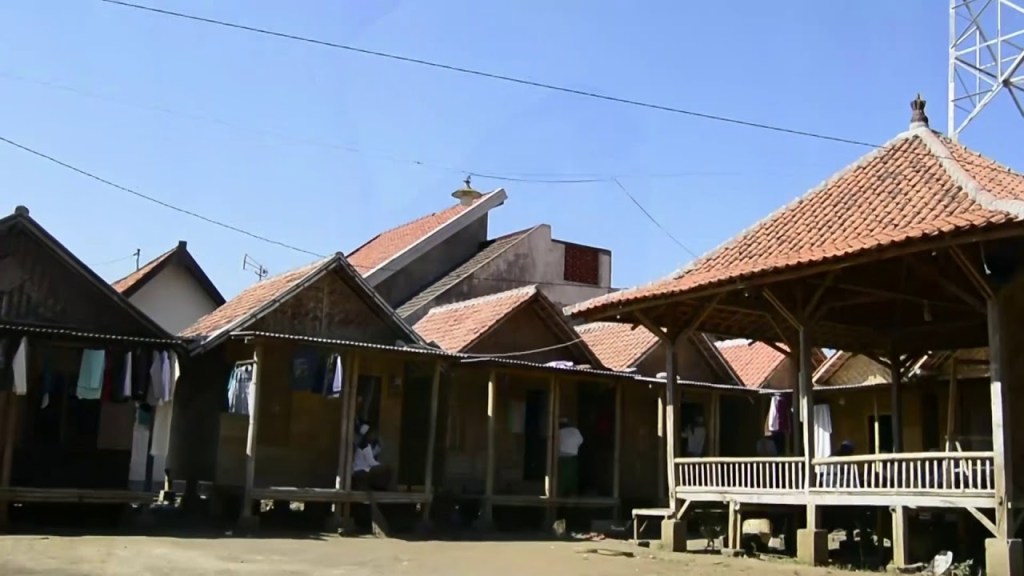Santri and pesantren continue to evolve and adapt in line with, or in response to, the changing times. It is uncertain how long this process will last.
One of the most visible aspects of this evolution is the variety of terms used to describe santri (students in Islamic boarding schools). Titles such as santri mondok (resident santri), santri kelana (travelling santri), santri kalong (commuter santri), and mahasantri (santri in higher education), reflect the changes within the community of learners who pursue knowledge in pesantren.

Initially, santri referred solely to individuals who studied at pesantren and lived within its quarters. They formed an integral part of the pesantren ecosystem, alongside kiai (religious teachers), other instructors, mosques or prayer rooms as centers of learning and worship, living quarters for the students, business units to support pesantren activities, and the surrounding community. This structure contributed to the notion of pesantren as a “subculture.”
At the beginning, this definition applied primarily to santri mukim or santri mondok (resident santri). Over time, new categories emerged: santri kelana and santri kalong. A santri kelana refers to a student who does not stay in one pesantren. Instead, they travel from one pesantren to another over a certain period, driven by a deep passion for knowledge. Much like a wanderer, they seek to acquire as much wisdom—and blessings from kiai—as possible.
In contrast, santri kalong are students who attend classes at the pesantren but do not reside within its grounds, often because they live nearby. They come to the pesantren for study sessions and return home afterward. A more recent term is mahasantri, which refers to students enrolled in pesantren programs equivalent to higher education, often in institutions called mahad aly. Previously, these students were simply referred to as senior santri.
—
The diverse terms used to describe santri reflect the broader evolution occurring within the world of pesantren. In the early days, centuries ago, the main purpose of attending a pesantren was to study and deepen one’s understanding of religious knowledge. Santri were those who stayed at the pesantren to achieve this goal.
In the past, after feeling they had sufficiently learned or were deemed ready by their kiai, many santri would continue their studies at other pesantren. Sometimes, this was at the suggestion or command of their kiai. Thus, it was common for santri to move from one pesantren to another, always guided by their core motivation to seek knowledge. These students were known as santri kelana. The more pesantren they visited, the more teachers they learned from, the stronger their identity as santri became. Many of the great ulama (Islamic scholars) came from this tradition—almost none had only one teacher or studied at only one pesantren.
Today, however, santri kelana are increasingly rare. With time, more students are categorized as santri mukim, santri kalong, or mahasantri, and their reasons for attending pesantren are now more varied. Whereas in the past, students attended to deepen their religious knowledge and seek blessings from their kiai, today’s santri often have broader goals.
Many modern santri enter pesantren with the intention of mastering both religious and secular subjects, whether in general education or specialized vocational programs. Some even attend pesantren primarily to acquire specific skills, with religious studies becoming secondary. They may take advantage of the opportunity to study religion alongside their main focus on other disciplines.
This shift reflects the broader evolution of pesantren, which have adapted to modern demands and societal changes. Initially, there was only the term pondok pesantren, with no other distinctions. Over time, the terms salaf and khalaf emerged, differentiating between traditional pesantren and modern ones. Pesantren salaf refers to the older, more traditional institutions, which use classical teaching methods such as sorogan, bandongan, and wetonan. In contrast, pesantren khalaf are those that have adopted modern systems, incorporating classroom-based instruction alongside traditional teachings. These institutions are often understood as pesantren that blend traditional and modern educational approaches.
Today, many pesantren resemble non-religious educational institutions. Often referred to as “modern pesantren” or “Islamic Boarding Schools” in international parlance, these institutions offer a range of formal educational programs, including religious schools (madrasah) and general schools (junior and senior high schools). In addition to mahad aly programs, many pesantren now also house secular universities, offering instruction in various academic disciplines. It is here that mahasantri pursue their studies.
Beyond educational methods, pesantren have also adopted modern economic practices. Whereas in the past, santri were involved in agricultural work to support the pesantren, many pesantren now run diverse businesses, producing everything from agricultural goods to industrial products. Some pesantren have even penetrated global markets. Today, santri often remain in pesantren not just to study religion but also to work professionally within the pesantren’s business environment.
How far this evolution of santri and pesantren will go, and how they will continue to adapt to a rapidly changing world, is difficult to predict. However, if we look at history, we see that pesantren and their students have always been resilient in the face of change. Their existence seems assured, even though certain aspects may evolve.
For instance, it is becoming harder to find santri kelana—those who travel from one pesantren to another in search of knowledge and blessings. Traditional salaf pesantren are also becoming rarer, as fewer institutions maintain their purely classical teachings. But does this mean fewer pesantren will produce great ulama or kiai? Only time will tell. Wallahu a’lam bishawab.
Translated from here.







